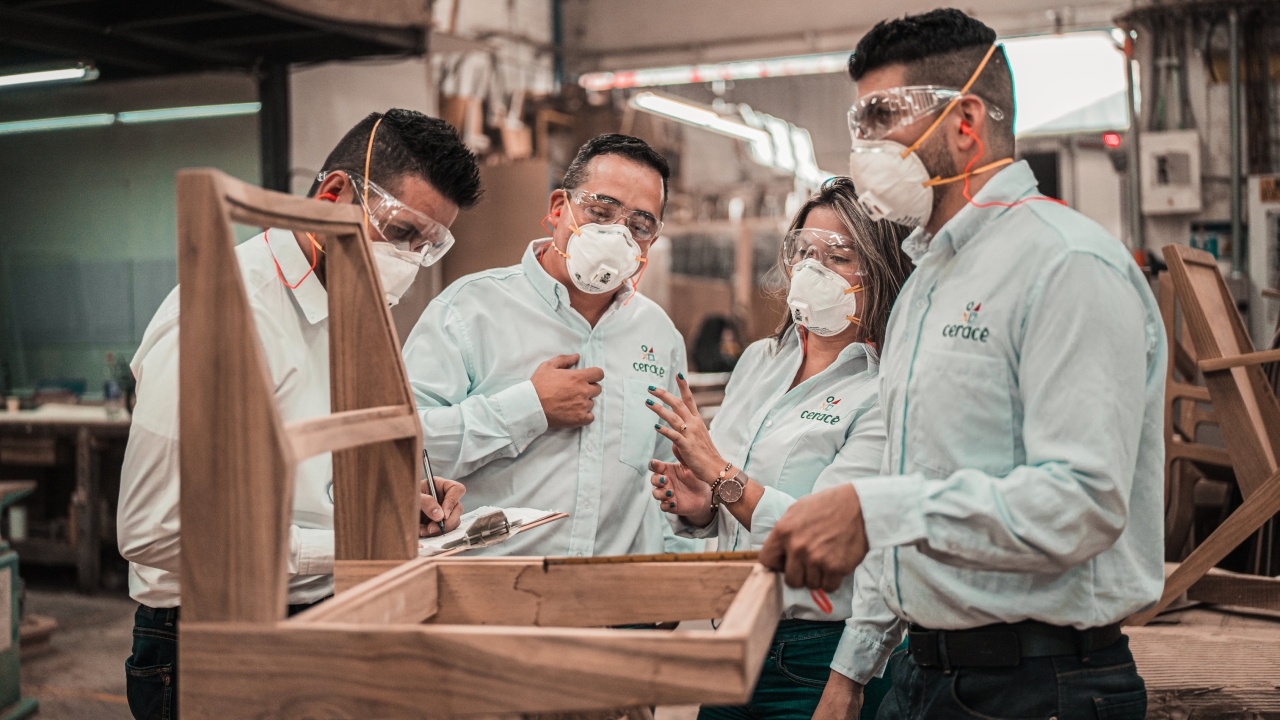
Tacit knowledge transfer is hampered by COVID-19 work from home. What are the potential solutions?
In response to the COVID-19 pandemic, employees have been required to work from home (WFH) as much as possible. They then communicate with each other, managers, subordinates, clients, and stakeholders through the use of online videoconferencing software such as Zoom.
There’s increasing speculation that this shift towards WFH will remain after the pandemic ends, with major companies such as Mondelez, Nationwide, and Barclays now talking about a permanent shift to WFH with associated reductions in costly office space. Reinforcing this, more than two-thirds of the 5000 workers approached in a recent survey conducted in Australia, France, Germany, Italy, and the United Kingdom say they are more productive working at home, and a recent study1 found that 37% of jobs in the United States can be performed entirely at home.
However, there’s a potentially serious downside of the WFH online communication trend that is only now starting to receive attention. As a new editorial2 in the Journal of International Business Policy alerts, “complex forms of knowledge are difficult to communicate over distance and require direct and repeated face-to-face contact for their exchange.”
This is echoed in new research3 discussed by Adi Gaskell in an article this week. The researchers found that sharing tacit knowledge is key for mentoring success, and express concern that remote learning, which is becoming more common during the COVID-19 pandemic, may not be as effective a means of transferring such tacit knowledge. Professor Brian Uzzi, the corresponding author for the research, states that:
Communicating codified knowledge is relatively straightforward. It’s written down in books and presentations. But it’s the unwritten knowledge we intuitively convey through our interactions and demonstrations … that makes a real difference …
Face-to-face interaction is essential. When we teach by doing, we are conveying tacit knowledge we don’t even realize we have
What are the possible solutions to this problem? Because it’s a newly emerging issue, research is very scant. However, two potential responses have been identified in a new Working Paper4 published by the Department of Management at the Università Ca’ Foscari Veneziare:
- rethinking and redesigning high-risk face-to-face work activities
- thinking about and designing new ways of digital interaction.
Rethinking and redesigning high-risk work activities
Given the value of face-to-face communication in tacit knowledge transfer, one potential solution is to allow employees who work in roles where this is important to return to their normal workplaces, but with the careful management of high-risk activities.
To assist with this, the Università Ca’Foscari Venezia researchers have identified the work activities most likely to accelerate the spread of the SARS-Cov-2 coronavirus, the contagion that causes COVID-19. To do this, they gathered data from nine different sources that relate the speed of COVID-19 transmission in Metropolitan Statistical Areas (MSAs) in the United States to the presence of interaction-laden tasks in the same areas. The researchers found that communication-intense activities do accelerate the diffusion of the coronavirus, while other activities show either a weak or no statistically significant effect.
The seven communication-intense activities found to accelerate the diffusion of the coronavirus are:
- interpreting the meaning of information for others
- communicating with supervisors, peers, or subordinates
- communicating with persons outside organization
- establishing and maintaining interpersonal relationships
- resolving conflicts and negotiating with others
- provide consultation and advice to others
- performing administrative activities.
The other interaction-laden activities that show either a weak or no statistically significant effect are:
- assisting and caring for others
- selling or influencing others
- performing for or working directly with the public
- coordinating the work and activities of others
- developing and building teams
- training and teaching others
- guiding, directing, and motivating subordinates
- coaching and developing others
- staffing organizational units
- monitoring and controlling resources.
The researchers suggest that the seven communication-intense activities found to accelerate the diffusion of the coronavirus need to be avoided, or alternatively rethought and redesigned to reduce the risk. Definitions of all of the listed work activities can be found in the O*NET database, which reports working activities and their relevance for each of the 22 major occupations in the MSAs.
Exploring new ways of digital interaction
The other potential solution put forward by the Università Ca’Foscari Venezia researchers relates to thinking about and designing new ways of digital interaction. They state that:
R&D managers and innovation project leaders – and researchers in the Innovation Studies academic community – need to think how to re-design knowledge production processes keeping in mind that sharing tacit knowledge cannot be performed in the same way as before. Virtual teams may be conceived as the new arena where digital communication may be conducive of such sharing, but in this case new ways of interaction must be thought, as the digital space may show important limits in this sense.
A 2016 paper5 suggests a way in which this could be done. Rather than knowledge transfer through just the means of verbal communication, the paper explores the use of multisensory means to communicate and comprehend, where mentor/ teacher and mentee / student create new ways of understanding, relating, and representing the practice under study.
Specifically, author Julie Botticello considers the mediating role of digital photography for eliciting processes of knowledge sharing and knowledge making. Using the last remaining Leavers Lace factory in England as a case study, she details examples of how visual imagery can be used to reveal know-how and understanding around machine made lace. Leavers Lace (named after John Leavers who invented the machine in the early 1800s) imitates handmade lace. It is made on machines that mechanically twist two sets of threads into a net structure, a process that is much more labour intensive than modern machine lace manufacture.
Botticello experienced what each worker does, and how that contributes both to the ongoing running of the machines as a cyclical process of work, as well as to the linear process of producing lace to leave the factory for sale. The images she took attempt to deconstruct the final product into its constituent inputs. However, by focusing on the sequence, she came to also understand the complex human-machine (and human-human) connections and interactions taking place across the factory in the making process.
A multi-faceted methodology was used, including Botticello talking to workers as they worked, observing what they did, trying it herself, recording semi-structured interviews with them in front of their machines, as well as using photography and film. She also engaged in workers’ personal histories of lace making, by looking through worker’s own lace pattern albums, watching videos fellow factory workers had made, and reading personal notes, poems and stories written by the lace workers, collected throughout their working lives.
Botticello’s research had the aim of creating a body of knowledge that could be used to help train new employees in the intricacies of the Leavers Lace process after the current knowledge holders have retired. Botticello advises that while she did not attain a complete understanding of the lace production processes herself through her research, those who already have relevant skills and knowledge would be more likely to gain this understanding.
Because Botticello’s work sought to create resources to assist the indirect transfer of tacit knowledge, there is the potential to build on her work and research the use of imagery to enhance tacit knowledge transfer through digital means. This should be explored by knowledge management researchers and the knowledge management community.
Header image source: Cleyder Duque on Pexels.
References:
- Dingel, J. I., & Neiman, B. (2020). How many jobs can be done at home? (No. w26948). National Bureau of Economic Research. ↩
- Van Assche, A., & Lundan, S. (2020). From the editor: COVID-19 and international business policy. Journal of International Business Policy, 3, 273–279. ↩
- Mentorship and protégé success in STEM fields. Proceedings of the National Academy of Sciences, 117(25), 14077-14083. ↩
- Ferrucci, E., & Rullani, F. (2020). Re-designing knowledge production in the Post-Covid-19 era. A task-based approach. Department of Management, Università Ca’Foscari Venezia Working Paper 2/2020, June 2020. ↩
- Botticello, J. (2016). From documentation to dialogue: exploring new ‘routes to knowledge’through digital image making. Visual Studies, 31(4), 310-323. ↩
Also published on Medium.







Dear author,
Thanks for your inspiring article, i think we need a new knowledge transfer framework for post-pandemic cooperation.
Stay Safe.
Very interesting. Overall I see not much new here. Remote work was a thing well before COVID, especially in large, global organizations, so we have been working to improve our tools and our capabilities on this front for what, at least a decade? COVID pushed that down, so to speak, to a lot more smaller organizations that might not have been so well equipped to deal with it.
On the KM front, I guess it depends if you believe that you can transfer ‘tacit’ knowledge. I am personally not a fan of the Nonaka & Takeuchi “SECI” model – so for me, sharing ‘tacit’ knowledge means transforming it back into information that is shared. Again, there have been universities working and studying this for quite some time, how do you ensure that all the “know how” that an expert has in their head (the tacit knowledge) can be transformed into ‘explicit’ knowledge or information so that it can be shared. Different academics have their favorite methodologies, blogging (or other forms of narrative writing), video interviews where the expert can expand on their nuanced know how etc…
So all in all, I am going to say working from home does not prevent ‘tacit’ knowledge sharing, because I don’t believe there is such a thing per se, it is a more complex process, and for knowledge workers I see plenty of tools and methodologies out there to help, it might just be that an organization has no KM professionals to help them with the perceived problem.